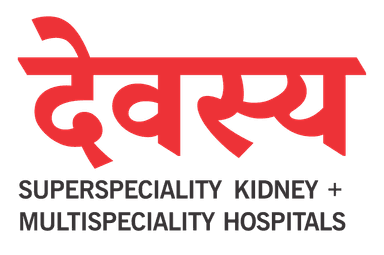Torsion of Testis Treatments & Surgery
How Devasya Hospital Helps to cure Torsion of testis?
Devasya Hospital provides the best treatment for testicular torsion. It is a disorder in which the spermatic cord bends and cuts off blood supply to the testis. For the testicular tortion treatment, the hospital provides timely medical care and performs an orchiectomy. It is surgery that removes the infected testicle to reduce discomfort and prevent further complications.
Our qualified medical team is skilled in quickly identifying and treating testicular torsion, ensuring patients receive the finest care possible. Our comprehensive approach to treating testicular torsion includes prompt surgical intervention, like an Orchiectomy. It involves removing the infected testis to stop further issues and relieve discomfort. The state-of-the-art facilities and trained surgeons at Devasya Hospital ensure excellent outcomes for patients, allowing for faster recovery and enhanced overall health.
FAQs
Testicular torsion occurs when the spermatic cord, which provides blood flow to the testicle, becomes twisted. The exact cause of testicular torsion is often unknown and can occur spontaneously. However, certain factors can increase the risk, including anatomical abnormalities, trauma to the testicles, strenuous physical activity, and previous episodes of testicular torsion. It can affect males of any age, but it is most common in adolescents and young adults.
Diagnosing testicular torsion typically involves a combination of medical history evaluation, physical examination, and imaging tests. The healthcare professional will inquire about the symptoms and perform a physical examination to assess the condition of the testicles. Imaging tests such as ultrasound may be conducted to confirm the diagnosis by visualizing the blood flow to the testicles. Ultrasound can help determine if there is reduced or absent blood flow, which is a characteristic feature of testicular torsion.
The symptoms of testicular torsion can include sudden and severe testicular pain, swelling, redness of the scrotum, and a higher position of the affected testicle. There may also be associated symptoms such as nausea and vomiting. It is important to note that these symptoms can vary in intensity and may be intermittent initially. However, it is crucial to seek immediate medical attention if testicular torsion is suspected, as timely intervention is vital to prevent permanent damage to the testicle.
Early signs of testicular torsion can include mild or intermittent testicular pain that may come and go. The pain may initially be localized to the testicle but can spread to the lower abdomen or groin area. Other early signs may include a slight swelling or change in the position of the testicle. It is important not to ignore these early signs and seek prompt medical attention to prevent the progression of torsion and potential damage to the testicle.
If testicular torsion is not promptly treated, it can lead to serious complications. The lack of blood flow to the testicle can cause ischemia (lack of oxygen) and result in testicular damage or tissue death (testicular infarction). This can lead to long-term complications such as infertility or the need for testicular removal (orchiectomy). Therefore, immediate medical intervention is essential to prevent these complications.
Prevention measures for testicular torsion are limited since it often occurs spontaneously. However, individuals who are prone to recurrent testicular torsion or have a family history of the condition may consider preventive measures such as testicular fixation surgery. This surgical procedure involves attaching the testicle to the scrotum to reduce the risk of torsion. However, the effectiveness of this procedure in preventing testicular torsion is still debated, and it should be discussed with a healthcare professional.



